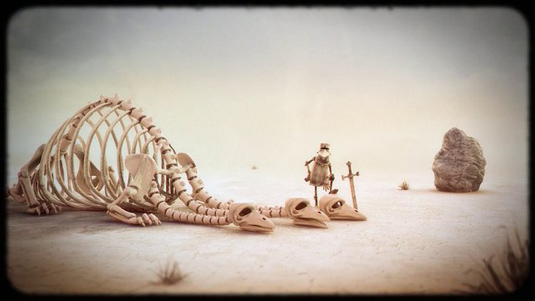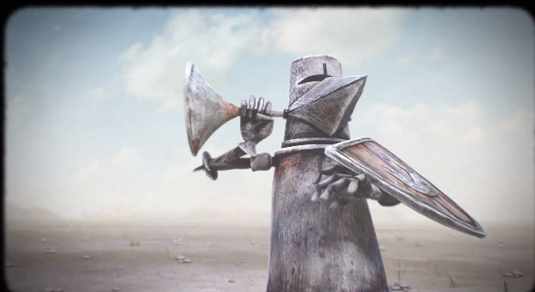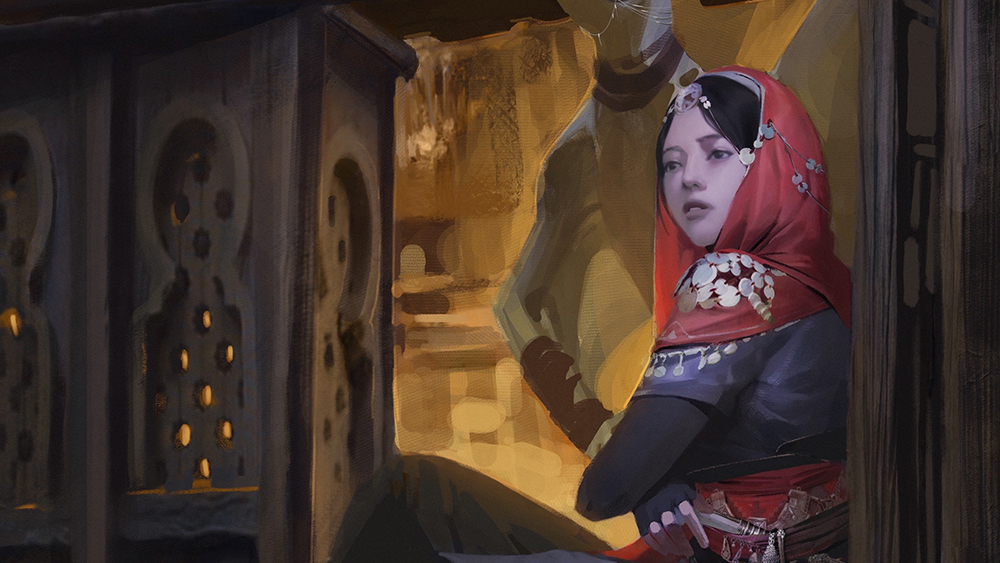Hand-painted or 3D? This charming animation combines both techniques
Director Jan Bubenicek infuses 3D pixels with the feel of classic animation in this tale of a dragon.
We're suckers for great 3D movies here at Creative Bloq. So 3D short Charge the Dragon, by director Jan Bubenicek and Prague-based postproduction house RUR, is right up our street.
The charming film tells the tale of a silly and pompous knight, who, on his travels, hears the dragon roar in the distance. The urge to hunt it down is too much but his quest to slay the creature has anything but a fairytale ending.
The simple things
The director’s vision was to find the CG equivalent of a simple, hand painted animation. Bubenicek explains: "If you draw a figure on white paper with a horizontal line behind it, it's quite obvious to everybody that the line symbolises the horizon and the figure must be standing on the ground in some kind of environment.
Charge the dragon is about finding the edge, finding the minimum of that 'more' that you have to show with CGI
"But with CGI you have to be much more concrete. A single line is not enough, you have to reveal more. Charge the dragon is about finding the edge, finding the minimum of that 'more' that you have to show. So we built a stylised world with minimalistic instruments, showing just the basis but still creating something attractive to the eye."

Anything but perfect
The Charge the Dragon team took the same minimalistic approach to the film's lead. "The character of the knight was similar, with the shape of the figure being remniscent of a simple drawing without any unnecessary details," says Bubenicek. "We concentrated on the non-perfection that you don't usually find in CGI. For example, the whole asymmetric figure is leaning to the right side slightly (like most drawings of right handed people), one of his legs is a bit thicker than the other and one eye is bigger than the other."

Charge the Dragon was created using a combination of tools from Softimage, Motionbuilder, ZBrush, Mental Ray and Nuke. "Each movie uses different animation techniques, including CGI, a combination of animation and actor, muppets, and is of different genre - from gag comedy to sentimental tragedy," says Bubenicek.
An ongoing project, and in a similar fashion to the first, Charge the Dragon is the first of three films by Bubenicek and RAR, with each of the stories to come featuring courageous but foolish heroes who, due to their own tragic mistakes, do not survive to tell the tales. Planned to be completed in autumn 2015, we can't wait to see what movie the team releases next.
Daily design news, reviews, how-tos and more, as picked by the editors.
Liked this? Read these!
- The best 3D movies coming in 2014
- Discover what's next for Augmented Reality
- Download free textures: high resolution and ready to use now

The Creative Bloq team is made up of a group of art and design enthusiasts, and has changed and evolved since Creative Bloq began back in 2012. The current website team consists of eight full-time members of staff: Editor Georgia Coggan, Deputy Editor Rosie Hilder, Ecommerce Editor Beren Neale, Senior News Editor Daniel Piper, Editor, Digital Art and 3D Ian Dean, Tech Reviews Editor Erlingur Einarsson, Ecommerce Writer Beth Nicholls and Staff Writer Natalie Fear, as well as a roster of freelancers from around the world. The ImagineFX magazine team also pitch in, ensuring that content from leading digital art publication ImagineFX is represented on Creative Bloq.
